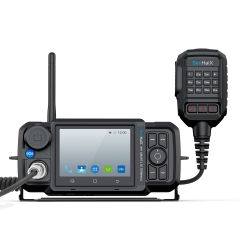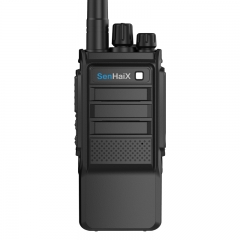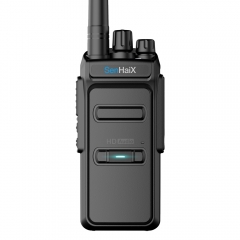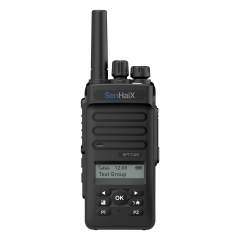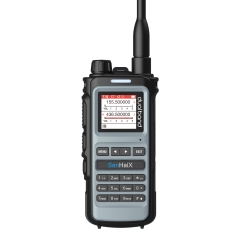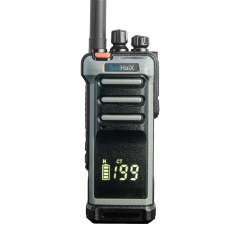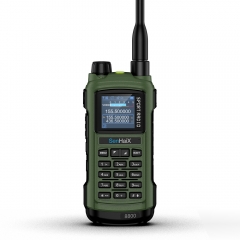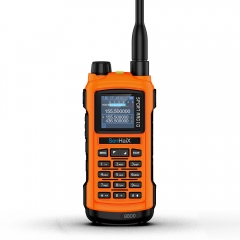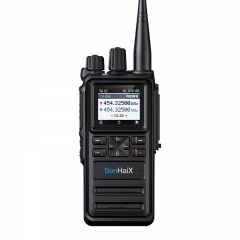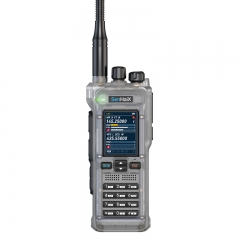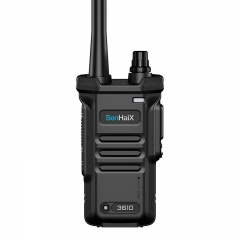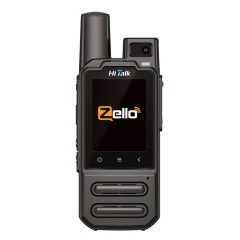Walkie-talkies are the main communication tool for radio amateurs (herein after called HAMs), and HAMs hopes to have a high- performance radio system to send out strong waves. Different products have different performances. Today SenHaiX takes you to sort out the comparison of various walkie-talkies:
Amateur Walkie-talkie VS Professional Walkie-talkie
Many new HAMs were envious of professional walkie-talkies in the beginning, thinking that the professional walkie-talkies used by other people's military police have high performance and long communication distance, while the performance of amateur walkie-talkies for amateur personal use is naturally worse. In fact, it is not the case. The professional and amateur radios here do not refer to the degree of professionalism in manufacturing technology but to different user groups. Amateur radios are not toy radios. Different user groups have different application characteristics and needs, and the same function may be vital to one type of user and may be a burden to another type of user.
For example, the frequency keyboard direct input function generally provided by amateur walkie-talkies is a very necessary and convenient function for HAMs. What frequency should be used for direct keyboard input like making a call, but for professional users, this function may bring trouble. Professional users use a handful of fixed frequency points, and the call is also in an internal small circle. The preset channel does not require temporary frequency input at all. The keyboard frequency change function may also cause misoperation to change the current communication frequency and cause communication failure. Many industry users who use professional walkie-talkies do not even have the concept of frequency. Walkie-talkies are just a communication tool like mobile phones.
Setting the frequency is a pleasant thing for the HAMs, but it is an annoying technical task for the walkie-talkie users of commercial users. It needs to be operated by professionals, so most professional walkie-talkies are designed as computer programming type. Stupid models are as simple and easy to use as possible, but also easy to manage.
In terms of function, amateur walkie-talkies are definitely much more powerful than professional walkie-talkies. Amateur walkie-talkies generally have functions such as frequency display, panel manual frequency adjustment, frequency scanning, received signal strength display, multi-level output power switching which professional walkie-talkies don’t have, not to mention dual-band operation, broadband extended reception, dual reception advanced functions of amateur models such as channel waiting. Some brand fans say that some new foreign high-end professional walkie-talkies can increase the panel frequency setting function FPP. There is still a big difference between FPP and amateur radio's VFO mode free use of frequency. FPP is just equivalent to providing manual channel editing with a panel that can be separated from computer programming, and even professional walkie-talkies with FPP function still cannot perform continuous frequency scanning.
The scanning function of the professional walkie-talkie is limited to the fixed channels that have been pre-programmed. A few new professional walkie-talkies have newly added the receiving signal strength display function. Because this function is not valued by industry users, there is still a big gap between the display accuracy of the signal meter and the amateur radio. Some professional walkie-talkies have the signal meter in the cluster mode. It can be displayed, and it cannot be used in the regular direct frequency mode used by amateur radio stations. Some professional walkie-talkies provide two levels of power to choose from, while most amateur walkie-talkies provide three to four levels of output power.
From the perspective of radio frequency performance, amateur walkie-talkies and professional walkie-talkies can be said to be in the middle. The two most basic indicators of walkie-talkies, transmit power and receiving sensitivity, amateur walkie-talkies have certain advantages. The mainstream 430MHz amateur walkie-talkies, even some domestic products, provide 5W power output, while many UHF professional walkie-talkies check the original factory index and the output power is 4W. In terms of receiving sensitivity, amateur walkie-talkies have always had an absolute advantage. Most amateur walkie-talkies, including domestic walkie-talkies, have a sensitivity better than 0.2μV, while the index of imported professional phones is generally at the level of 0.25μV. Some professional phone enthusiasts put forward the argument that professional phones have good anti-interference. It is true that some high-end professional phones have excellent RF circuit design or their own narrowband design. Therefore, they have certain advantages in anti-interference performance compared to amateur walkie-talkies with broadband design. Interference can only show its advantage when there is a certain intensity of interference. If the environmental interference itself is relatively small, the normal walkie-talkie can work, and if there is a big and obvious interference, no walkie-talkie can work. You can only ask the radio administration to eliminate the source of interference.
In terms of overall performance, amateur walkie-talkies are not much worse than professional walkie-talkies. In the past, high-end professional walkie-talkies represented by Motorola were known for their sturdy and loud sound. This aspect has always been the shortcoming of amateur models, but in recent years, amateur models have also kept pace with the times in their design and requirements. Many products conform to a number of US military standards. There is a big improvement. Many IPX7 waterproof standard walkie-talkies can be placed under 1 meter of water for 30 minutes. This waterproof performance is rarely achieved even by general professional phones.
The antenna interface used by most professional radios is different from that of amateur radios. At present, most walkie-talkies use SMA interface. The antenna base of professional radio adopts SMA-J type according to foreign tradition, while the antenna base of imported amateur radio is of SMA-K type. The interface converter is matched but it will affect the appearance and increase the high frequency loss. Most of the famous foreign third-party amateur radio high-performance antenna products are designed for amateur walkie-talkie SMA-K antenna bases.
Generally speaking, amateur walkie-talkies are more suitable for HAMs in terms of performance and function. Unless there are some HAMs with deep military and police plots, amateur models are definitely the first choice for amateur HAMs.


















